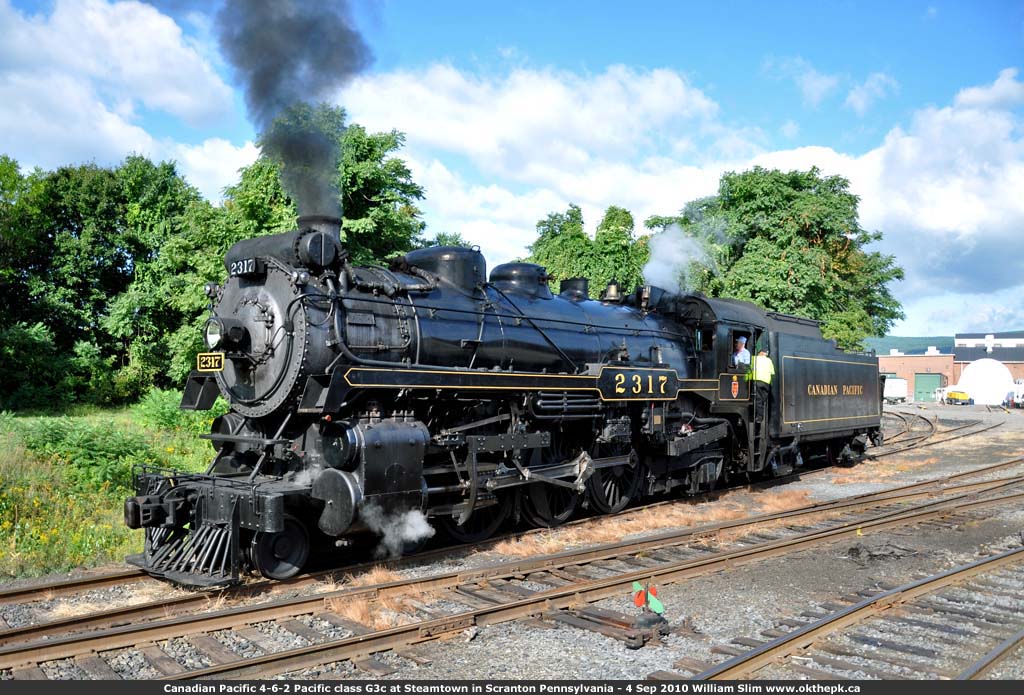 |
The first 4-6-2 type locomotives in the world were produced shortly after the turn of the century for use in New Zealand. From this first application came the type name "Pacific". Full use was made of the additional length afforded by the trailing truck, over which a wider firebox was placed. The resulting increased boiler capacity made the type instantly popular. Within a decade, all of the major North American railways had fleets of these locomotives. 4-6-2s were comprised in five Canadian Pacific Railway classes represented by the letter G. The G1s, G2s, and G5s, by virtue of size and service, were light Pacifics. The G3s and G4s, on the other hand, were larger engines for heavier duties. The first two series of Pacifics, the G1 and G2 classes were out-shopped by various builders between 1906 and 1914, and differed from one another in only one major feature, the size of the driving wheels. While the more functional G2s were given 70 inch driving wheels, the less numerous but faster G1s had 75 inch wheels, giving them somewhat less tractive effort. CPR owned 173 of the G3 class locomotives. CP 2317 is a 4-6-2 Pacific class G3c built by Montreal Locomotive Works in 1923.
|

